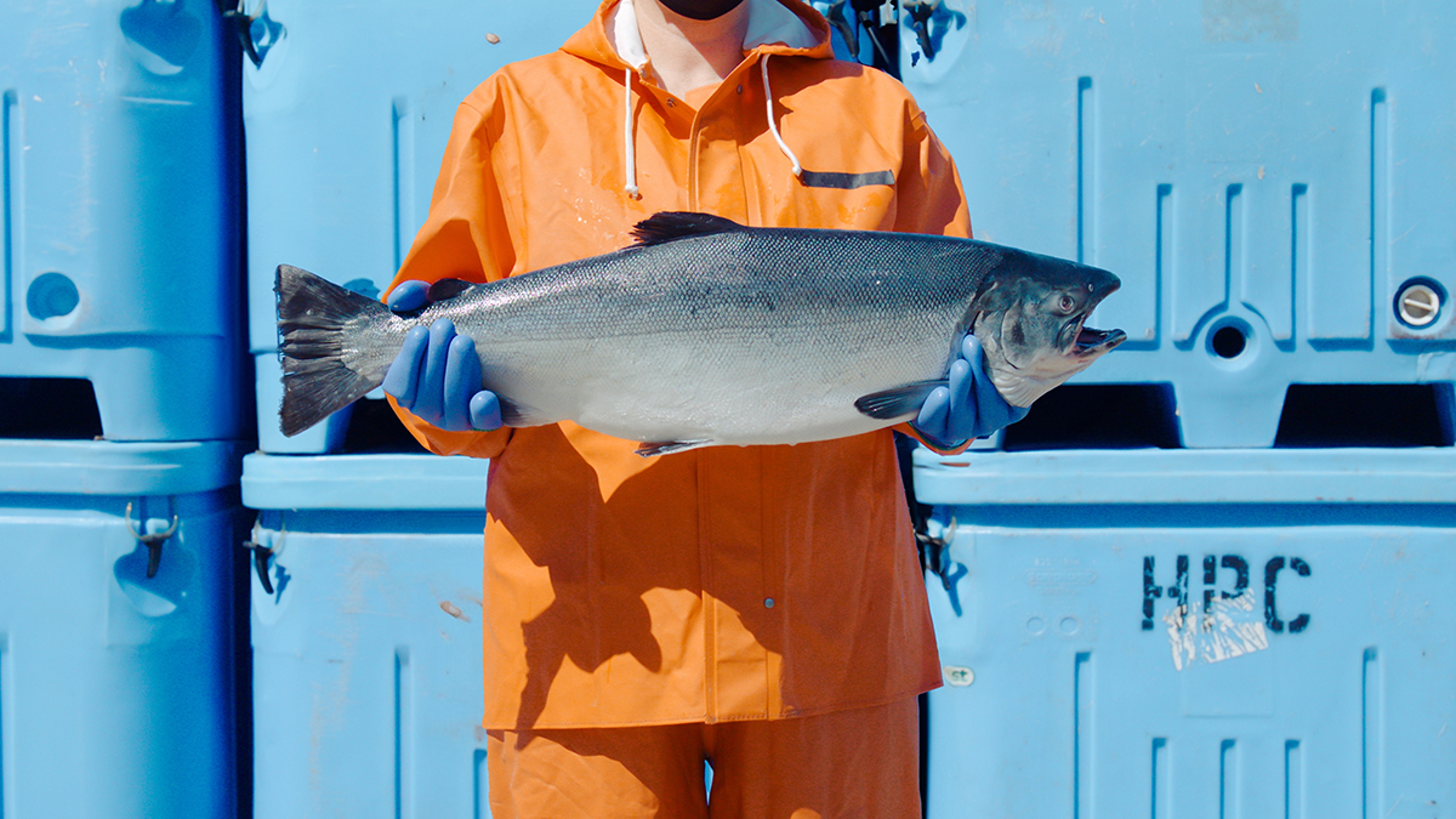Are All Salmon Created Equal?
It's a loaded question because the answer is based on what the fish are loading up on.
Mar 19, 2024
If you appreciate salmon’s mild flavor and meaty texture enough to eat it once a week, then nutritionists say you have every reason to double down. Even Uncle Sam agrees. Both the United States Department of Agriculture (USDA) and American Heart Association (AHA) recommend eating two 3-ounce servings of salmon per week.
That’s because salmon is classified as a superfood — a complete source of lean protein that’s rich in heart-healthy fats, muscle-building proteins, and immunity-boosting vitamins and minerals.
“Salmon has incredible nutritional value,” says Dr. Fereidoon Shahidi, a research professor at Memorial University of Newfoundland and an expert in food biochemistry, seafood and aquaculture, nutraceuticals, and flavor research. “It’s a vital source of long-chain, omega-3 fatty acids — eicosapentaenoic acid (EPA) and docosahexaenoic acid (DHA) — which are important for organs such as the brain, eyes, and heart.
All that good stuff begs the question: Which type of salmon is the most nutritious?

The healthiest types of salmon
The answer is not as straightforward as you’d think.
To begin with, several species of salmon inhabit the Earth's waters. But, given the issue of availability, the kind you're enjoying is likely one of the five most commonly sold: sockeye, silver (coho), keta (chum), king (chinook), or pink.
These are classified as North American Pacific salmon. There are also two lesser-known types, masu and amago, that stick closer to Asia, as well as the Atlantic salmon, the only salmon native to the Atlantic Ocean. Due to sustainability issues, however, commercial fishing of wild Atlantic salmon is restricted, and most of the Atlantic salmon we consume is farmed.
Until salmon hit the freshwater stage during spawning, their general appearance is confusingly similar: blue-green backs with silver sides, plus or minus some spotting. Naturally, the species vary in length, breadth, and weight. But even those defining characteristics are only part of what accounts for the variances in taste and nutritional value. Numerous others factor in, the most impactful of which are a salmon’s diet and its freedom to roam and build muscle.
That means attempting to rank species by nutritional value is mostly a huge oversimplification, Shahidi cautions. As a scientist, he concurs with studies, including a recent one, emphasizing salmon’s complex variables. As the study explains, beyond mere species, “the nutritional value, particularly the omega-3 content, can depend on the season, diet, and/or food availability, age, sex, and reproductive status of the fish and therefore can be highly variable."
Simply put, a plump and more mature sockeye that’s caught during the spawning season may contain greater nutritional value than a younger, pre-spawning king salmon, which, given time, would surpass the sockeye in weight (protein volume).
It’s definitely an inexact science, and since consumers are rarely provided that level of detail at the point of purchase, it comes down to finding one you like. Besides, most nutritionists generally take the easy way out, ranking salmon using the most important metric: average percentages of those highly beneficial omega-3s.
Who can blame them?
Based on a 3-ounce portion of cooked salmon, the Atlantic salmon, which averages the most omega-3s (2,100 milligrams), ranks first and is followed in descending order by king salmon (1,476 milligrams), silver salmon (900 milligrams), sockeye salmon (730 milligrams), keta salmon (683 milligrams), and pink salmon (564 milligrams).
Whatever species you select, stick to salmon certified by the Marine Stewardship Council (MSC) or Best Aquaculture Practices (BAP).
If you're wondering whether there's a difference between wild-caught and farmed salmon, Shahidi gives wild caught the edge because of that all-important "room to roam" and they enjoy a more varied natural diet.
Whether you go wild or farmed, we all should increase our overall consumption of fish, Shahidi says, “because most North Americans are deficient in so many of the nutritional properties that salmon contain and can help replenish.”







